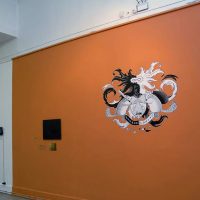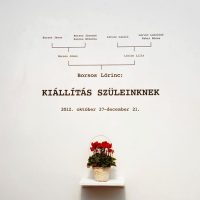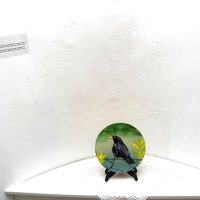The artists address a more personal subject in the exhibition at the museum in Székesfehérvár: the parent-child relationship. An especially interesting element of the mini-life-work exhibition presenting the oeuvre of the artists, starting from kindergarten up to the present day, is that it is their parents who are the curators.
“In the course of our work, we often realise that our desire to satisfy our parents has infiltrated our work. We would like to assure them that they did not make the wrong decision when they allowed us, in our childhood, to engage in what we truly loved, by entering an artistic career. Ever since, they are our most significant sponsors – in both a material and a psychological sense. They support us even when they don’t understand what we are dealing with, and why. Despite this, they feel an increasing motivation in understanding our artworks, and we are able to have conversations about them – touching upon both the art and the judgement of artists. By now they do not shrink back from initiating a discourse about our concepts, or even racking their brains over new ideas. At first we didn’t know how to handle this situation, but now we feel that the time has come to give them free reign over an exhibition, allowing them complete insight into the process of creation.”
With the inclusion of the parents as curators, the artists would like to create a situation that allows for mutual understanding. Where is the borderline between expectation, constraint to satisfy expectations, and healthy motivating forces? How will the parents – who are laical from an artistic perspective – address the task of arranging an exhibition? On what basis will they make their selections, and where will they place the emphasis? What kinds of emotions are aroused in them, and how do they make the most of the opportunity?



